Why Do So Many Bakeries and Pastry Shops Abound?
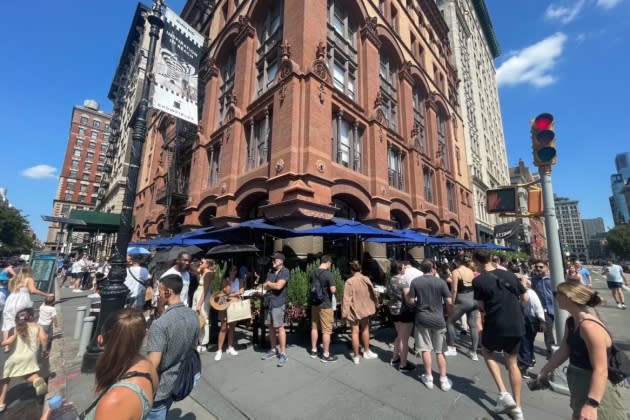
What’s with all the bakeries and designer pastries?
While coffee chains and cafés infiltrated New York City streets years ago, the latest wave of post-pandemic pick-me-ups can be found in an abundance of bakeries. Colorful, affordable, communal — the quest for the perfect pastry has become a pursuit in itself. Some tend to stroll past display cases as if they were taking in a museum exhibition; other upscale food halls are featuring pastry shops to sweeten the attraction. Paris-Brest delectables can be found at the recently opened sprawling Tin Building by Jean-George Vongerichten and bombolones, crostatas della nonna and other confections are among the offerings in the “pasticceria” at Harry’s Table.
More from WWD
”Bakeries have long been a staple of society, especially so in European culture,” says Smor Bakery Sebastian Perez, co-owner with Simon Bangsgaard. “We are both from Denmark and there the number of bakeries is equivalent to the number of Starbucks. They are everywhere. The same in Paris, Stockholm, Madrid, etc. The cultural diversion is really just catching up to the New York City lifestyle.”
Of course, the appeal of baked goods isn’t just for delicate Marie Antoinette-worthy creations. Consider the frenzy for the mustard donut concocted by French’s Mustard and Dough Doughnuts. The one-day giveaway involved eight weeks of tastings, Fitzco and Sunshine Sachs were hired for marketing and public relations, respectively, and donuts were sent via Amtrak to the Baltimore headquarters of McCormick & Co., which owns French’s Mustard.
Dough Doughnuts co-owner Steven Klein, a former sportswear manufacturing executive, says, “We did everything very professionally, similarly to almost any kind of tasting or as in fashion — everyone wants to see the fit. We created different styles and different items. In the end, we picked out a mustard donut that was glazed so that it had a decent taste. And people liked it actually — more than I thought [they would]. They are asking us to even bring it back.”
French’s financial splurge included wrapping Dough’s seven stores, as well as videos, influencers and promotions. ”We had over 1 billion [media] impressions in a couple of days. It was astronomical. They did such a good job; it went viral. We were in 60 publications, on ‘Good Morning America,’ and ‘Fox & Friends’ — everybody took a piece of it because it was so unique,” says Klein, adding that Dough’s site sold 25,000 donuts in two minutes.
”Food is a driving force because it’s a destination and offers satisfaction…if you use social media, it lasts longer. The cronut has been around for six or seven years already, and it’s still popular. Our donuts are very popular because they are brioche — lighter, fluffier. Almost nobody in the country makes brioche. It’s a different process. It’s more of a pastry.”
Klein adds, ”If anybody can come up with a pastry that tastes great, it kind of becomes a fashion icon because people have to try it, they wait on line for it and will pay any price. So you want to call it a designer pastry? Maybe. In a sense, it is because they’re paying a higher price, which of course everybody can’t afford because it becomes more expensive to make it. Inflation has hit the whole market — prices are rising for eggs, butter, flour, oil. Prices of the materials are forcing people to raise their prices.”
Free from pandemic quarantines, millions have embraced a carpe diem mind-set, flying off for vacations and embarking on once-in-a-lifetime experiences. In turn, the let-them-eat-cake attitude adds up and offers its own transportable moment.
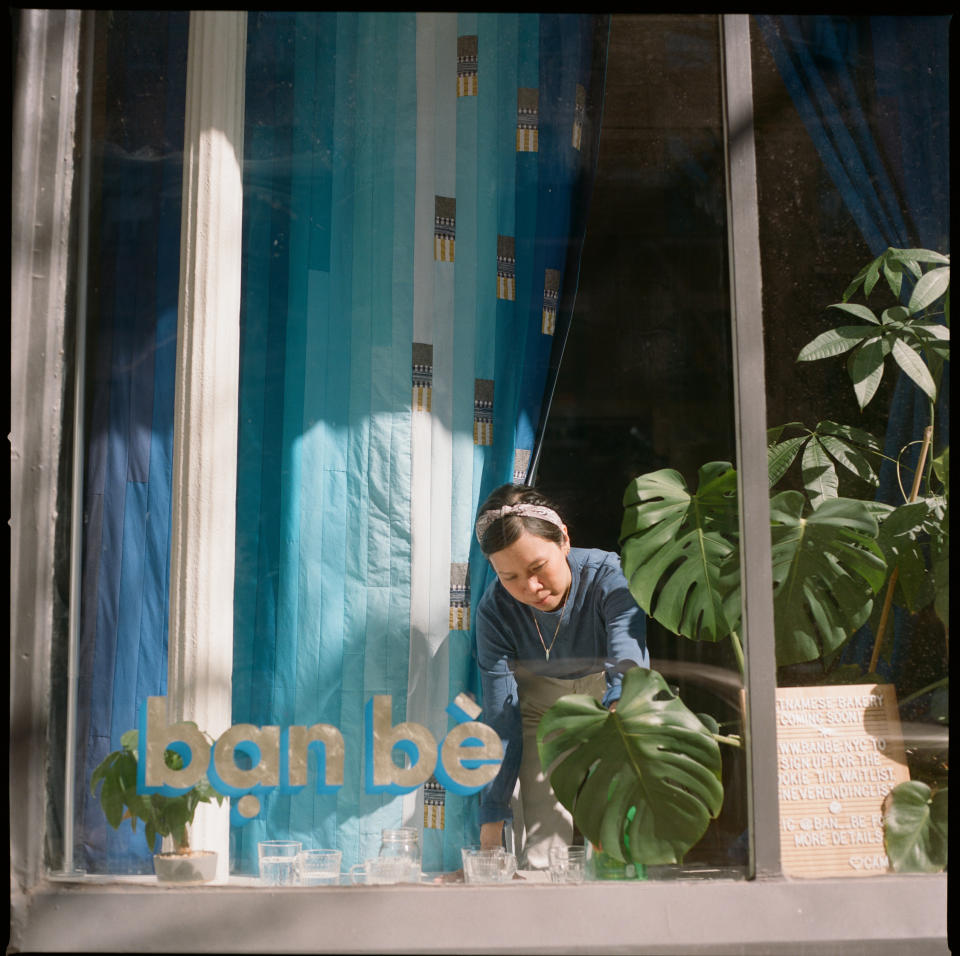
Doris Ho-Kane, who unveiled the Ban Be bakery in Brooklyn last July, sees the trend as a reach for warmth and comfort. “It took something as cataclysmic as the pandemic to usher in this return to the kitchen and to the sweets we cradled and devoured as children,” she says. “Pastries were once an afterthought, but now an entire dinner party can be centered around a beautiful agar jelly layer cake or a mountain of a Vietnamese cassava cake.”
The you-can-try-this-at-home element has heightened interest, too. A few years of sourdough bread kneading and funfetti cake making have given way to banana bread bake-offs and other TikTok-driven tricks. Another pandemic winner was “The Great British Bake Off,” which attracted 6.9 million viewers for its finale last fall. New Nordic Cuisine pioneer Claus Meyer says, “Bread — at least in the U.S. — for the most part and for far too long, as Henry Miller so poetically described it, has been ‘highly underwhelming.’ Organic grain production is one of the finest ways to free our ground water from pesticides, and a delicious bread is one of the most democratic luxuries on earth, especially if you bake it yourself.”
Asked about the renewed interest in bakeries and pastry shops, the Copenhagen-based Meyer, whose New Nordic Food Hall was a casualty of the shutdown, adds, “We also see this tremendous growth in specialty bakeries because opening up a small bakery is not as complicated and risky an affair as opening a restaurant is. Also, baking is such a wonderful and down-to-earth way to spread love in a community.”
Chef Jonghun Won aims to revive the art of breadmaking with this week’s opening of Pavé NYC, a European-style café and bakery. Acknowledging how baking blew up during the shutdown due to TikTok trends, the Food Network’s 2021 “Best Baker in America” Jaclyn Joseph chalks up the influx of bakeries to proprietors’ passion and making that their occupation.
“The more bakeries that we have is great because we all have something special to offer,” she says. “Everyone did notice after the pandemic that [it] is a luxury to go out, and it is almost an event to go out to enjoy something sweet. I think people realized that baking is not so easy and it requires a lot of skills. So there is an appreciation for the technique too.”
The economic impact of baking in the U.S. is significant — nearly $154.3 billion and 764,777 jobs, according to the American Bakers Association, an organization in its 150th year. In total, the impact of baked goods produced and sold in the U.S. is $480.47 billion. A further 1.52 million jobs are supported by the baking industry.
While rising food prices are weighing consumers down, many are willing to invest in the occasional splurge for relatively affordable indulgences. The shop-local movement and social media phenomenons like Dough Donut’s adventurous flavors, Lafayette Bakery’s “Supreme” creme-filled circular croissant, Kam Hung Bakery’s colorful sponge cakes and Sugar Wood’s suggestive baked goods are giving others reason to head for New York City’s pastry shops and bakeries.
Dough’s co-owner Klein says, ”When you go into a downturn, or whatever you want to call it, because nobody defines it, whether it’s a recession or the pressure of making a living, sweets have done very, very well. Any types of sweets — chocolates, pastries or anything of good quality — is what people crave when they have an urge.”
As ”the only donut store open seven days a week during the pandemic,” Dough found patrons were coming from the tri-state area and even from Pennsylvania “just to take a drive and have a donut, which shocked me,” Klein says. ”Whether it’s a pastry, a donut, a scone, a cookie, chocolate — it’s always been available to people when they go through hard times. It’s a sweet treat. It’s as simple as that. If you make a good product, you survive. If you don’t, you go by the wayside like any other business.”
As pastry chef and cronut creator Dominque Ansel could attest due to the cronut craze ignited years ago, demand can be so strong that multiple daily drops are needed. Dough, Lady Wong Pastry & Kuih and Lafayette are among the bakeries on board with that.
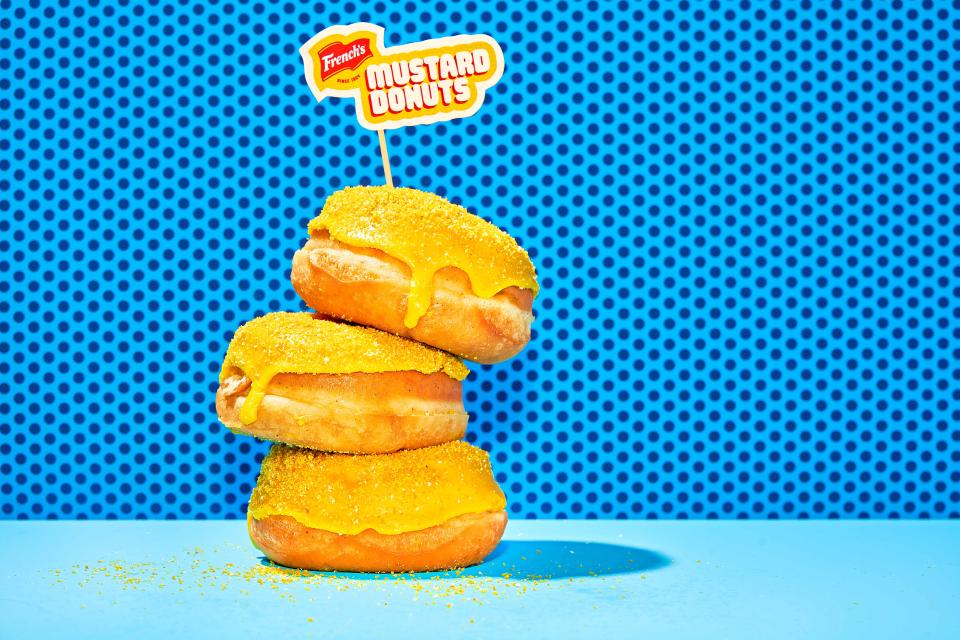
The aforementioned circular Supreme at Lafayette “well beyond a tasty, fancy pastry — social media has really driven this thing. People like to post that they had one. They like to post that they are on line. It’s a very visual experience on social media and it becomes very popular on TikTok and Instagram, which we like. It’s fun and it also maybe brings in people, who wouldn’t ordinarily come into the bakery. We’re into it. We’re leaning into it,” says Lafayette’s managing partner Luke Ostrom.
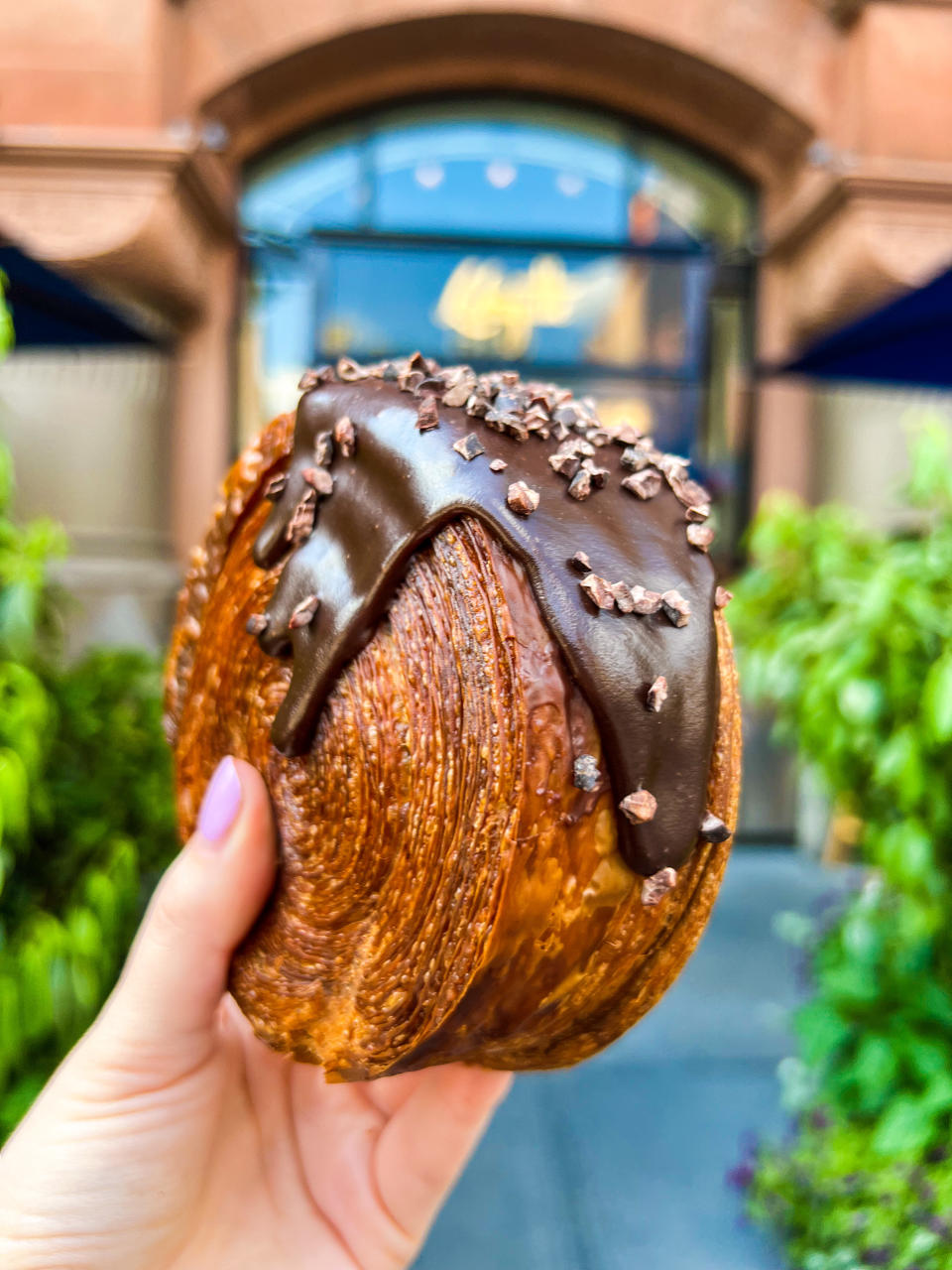
Food nostalgia set in during COVID-19 and post-pandemic, people are “getting very excited about things that are being baked in interesting ways and they are eager to have desserts again,” he says.
The bakery’s biggest conundrum is that it can’t bake enough Supremes, with 125 dropped at 8 a.m. and 125 more at noon. Sellouts have been so swift that there is a one-per-person limit now, the kitchen is being expanded and more people have been hired. Later this month, a third drop will be introduced in the late afternoon.
Asked if Lafayette is following the fashion and sneaker-driven drop model, Ostrom laughs, “Inevitably, we were sort of pushed to do so. It was not our intention in the beginning.”
Much media ink is being spilled on the wunderkind artistry of Eunji Lee’s pristine French Korean pastry “boutique” Lysee that bowed in late June in the Flatiron district. Her trompe l’oeil creations include a demure cob of corn that consists of corn-infused mousse, layers of caramel and a corn kernel biscuit with a grilled corn cream shell. Such edible artistry requires days in the making. Lee ventured out on her own after serving as the head pastry chef at Jungsik, which garnered two Michelin stars. Other newcomers include Lido in Rockefeller Center and the Asian-inspired Italian bakery Angelina Bakery that has branched out to serve more bombolones and other confections with a few locations including a 4,000-square-foot Times Square outpost.

Downtown is awash with a slew of new bakeries. Late night revelers might be increasingly crossing paths with off-to-work bakers at dawn in the East Village. The neighborhood has a thriving bakery scene, thanks to relative newcomers like Lady Wong Pastry & Kuih, Smor Bakery, La Cabra, Bread Story and La Librae. Like several other newcomers, Lady Wong sprang from the pandemic, when many longed for nostalgic food and in some cases struggled to find it. The husband-and-wife team Seleste Tan and Mogan Anthony have dreamed up moon cakes, candy-coated taro ube tarts, “pandacha” (pandan-matcha) Dutch-Indonesian butter cakes and a Champagne Oolong peach tart. Lady Wong also offers weekly drops that have been drawing lines out-the-door for its colorful concoctions.
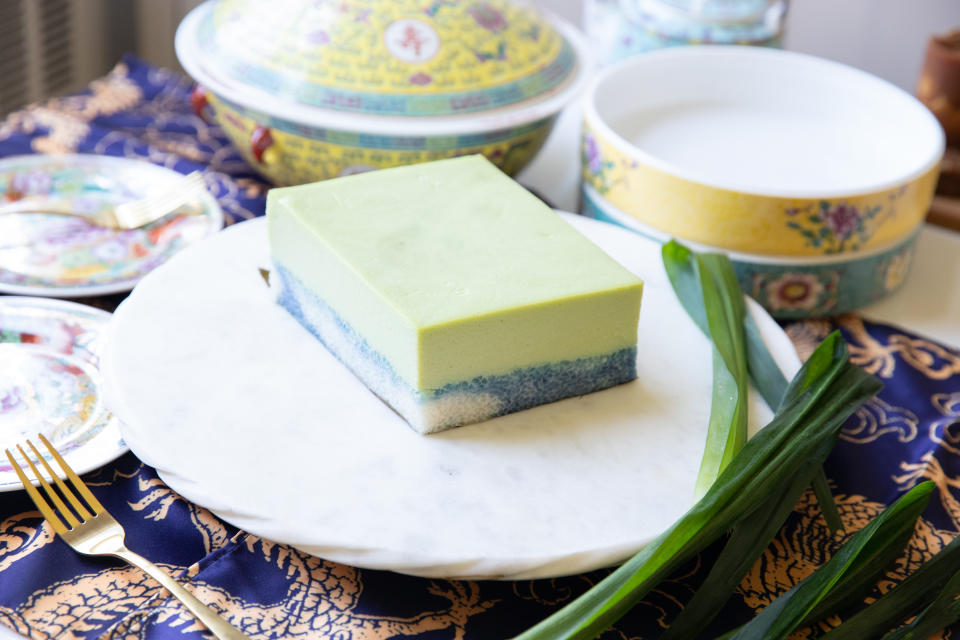
Scandinavian loaf lovers are in luck too in the neighborhood. Smor Bakery, an offshoot of the Scandinavian restaurant by the same name next door on East 12th Street. Passersby will waft cardamom buns, cinnamon buns tebirkes, salted chocolate rye cookies, rugbrod and and other specialties.
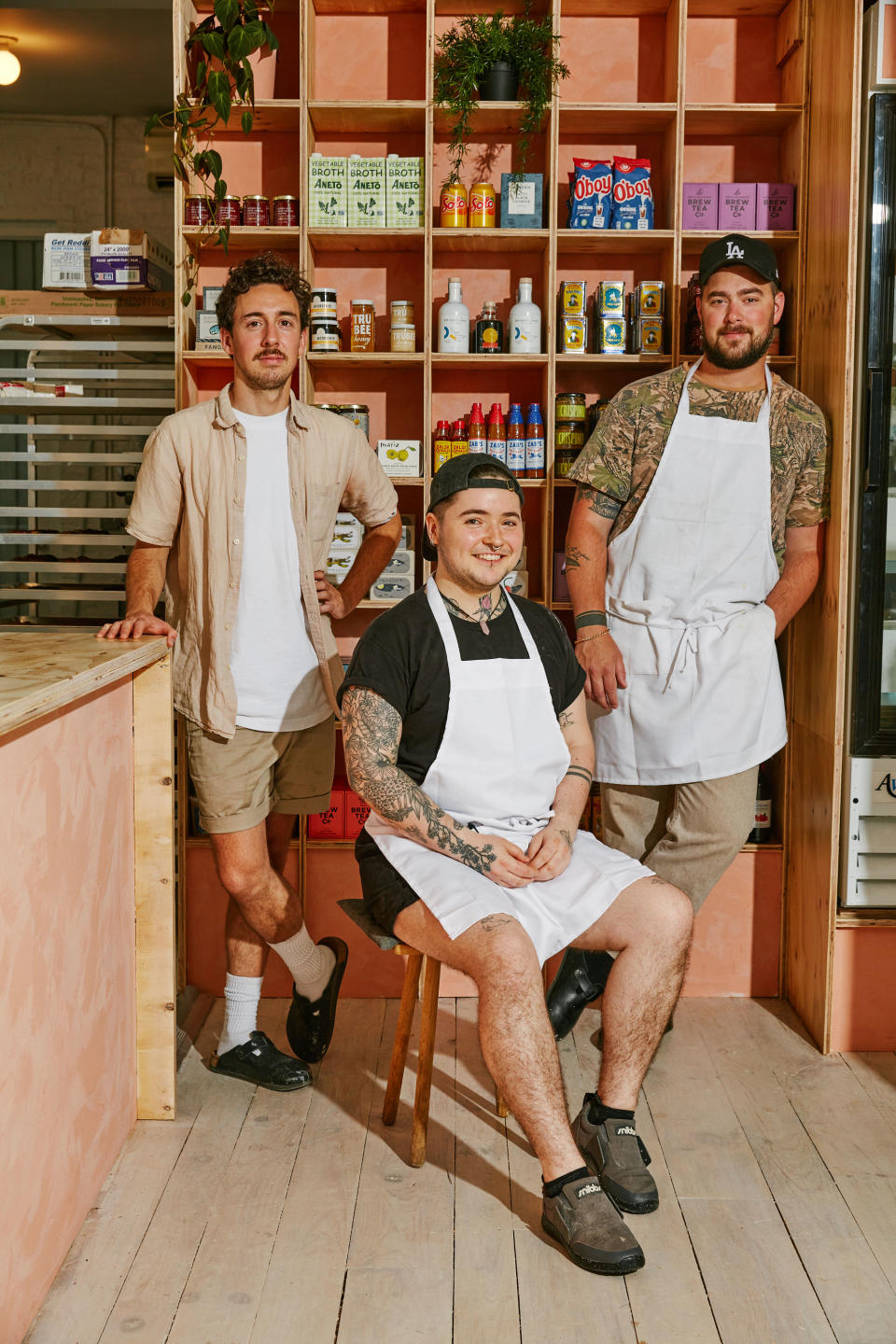
Another Nordic outpost — La Cabra — is about 10 blocks south. More austere than hygge, the New York location is the first in the U.S. for the Denmark-based company and was designed by its head of design Mikkel Selmer with features by ceramics partner Kasper Wurtz. The caffeinated lineup includes on occasion classic washed Colombian coffee from Orlando Sanchez and hand-brew is serious business. Its site bills coffee as “an illustration of our dream in motion, one that brings together terroir, varietal and the skilled hand of processing.” Roger that, but what about the pastry? Banana caramel cookies, lemon-infused canneles, barley mousse Chou and the more expected cardamom buns are part of the rotating menu.
Croissants are baked throughout each morning to keep things fresh. Lard lovers will take heart knowing the croissants call for 27 layers of French butter that is first fermented cold for 24 hours.
Over at 35 Cooper Square, Librae Bakery blends “Middle Eastern roots and Danish techniques” and promotes itself as “a third culture bakery.” Translation? Basque cheesecake, lumees Earl Grey blueberry scones, rose pistachio croissants and Marmite-spiked, sesame-encrusted pastries are among other unexpected combinations.
Decades after Sarah Jessica Parker and “Sex In the City” made cupcakes at Magnolia Bakery a must-stop for thousands of out-of-towners, many still flock to its Manhattan outposts and rivals like Billy’s Bakery. Another New York City-grown company, Levain Bakery, has not just definitively supersized the walnut chocolate chip cookie but attracted a flood of customers. So much so that last month Levain started shipping nationwide with DoorDash, so that Hawaiians and others can land eight cookies for $70. Levain has also branched out to other U.S. cities, including Boston.
Eight years after the first Maman café and bakery location opened in SoHo, the 22-unit company will have 28 by the end of the year. Six or seven more are planned for next year. Some of the real estate opportunities were caused by the pandemic, which “unfortunately” forced the closures of many bakeries, says founder and designer Elisa Marshall.
“We were contacted by a lot of landlords, who had had their tenants (including some second-generation bakeries) basically just hand back the keys because they didn’t want the spaces any more.”
Initially designed to be counter to the cold, industrial chic scene that ruled in the beginning of the Aughts, the original ethos was to create multisensory cafés that are “a full experience through the vibe, the smells, the attention to details, great food, great coffee and people that were more reminiscent of home,” Marshall says.
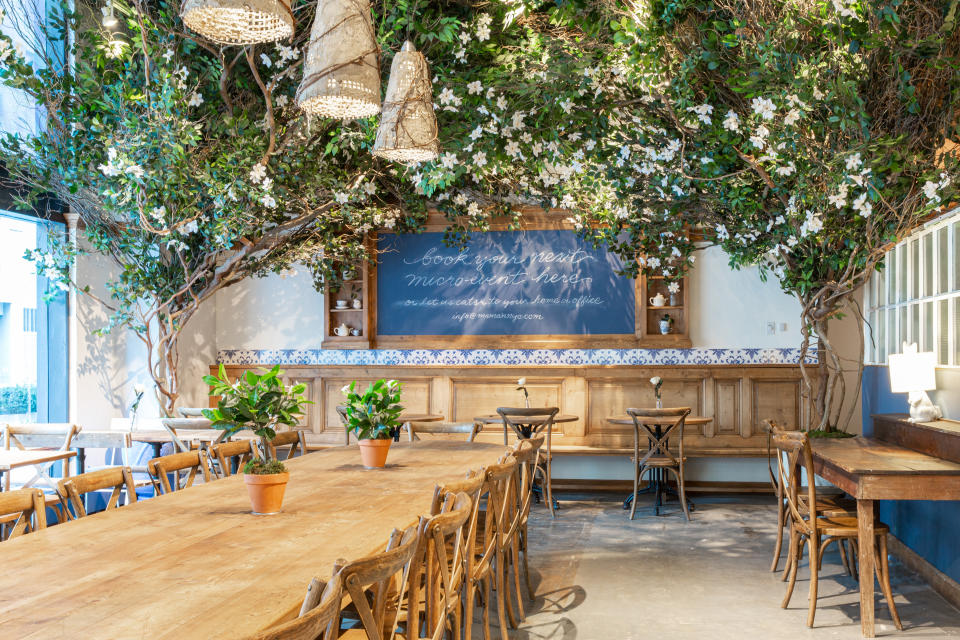
Part of that growth stemmed from a fluke early on — when an Eater editor, who lived nearby, wandered in and later posted about Maman’s nutty chocolate chip cookie rivaling ones sold at Levain. Oprah Winfrey’s team then caught wind of that and placed Maman’s specialty on one of her “Favorite Things” list. A blend of French and American cuisine, the mostly French pastry team cooks up homemade Oreos — a chocolate salted wafer with a white chocolate ganache filling — as well as everything bagel croissants. While “people’s love for sweets is never going to die in the U.S.,” Maman plays up premium ingredients like top-quality dark chocolate, imported sea salt and roasted nuts. Such primo items are increasingly prized among customers and bakers alike.
A former fashion executive, Marshall started her pastry career as a side job, doing trunk shows and baking cookies for the Coterie trade show and other fashion events. “A lot of brands — whether it be fashion or not — are really looking to take on that lifestyle element. It’s amazing how fashion and food have come into play with each other. Food and coffee especially is the heart of New York and that at the end of the day drives so much traffic for many retail stores. We consistently do tons of collaborations — every other day we’re out there with a different retailer and we do backstage catering for many of the top designers,” Marshall says.
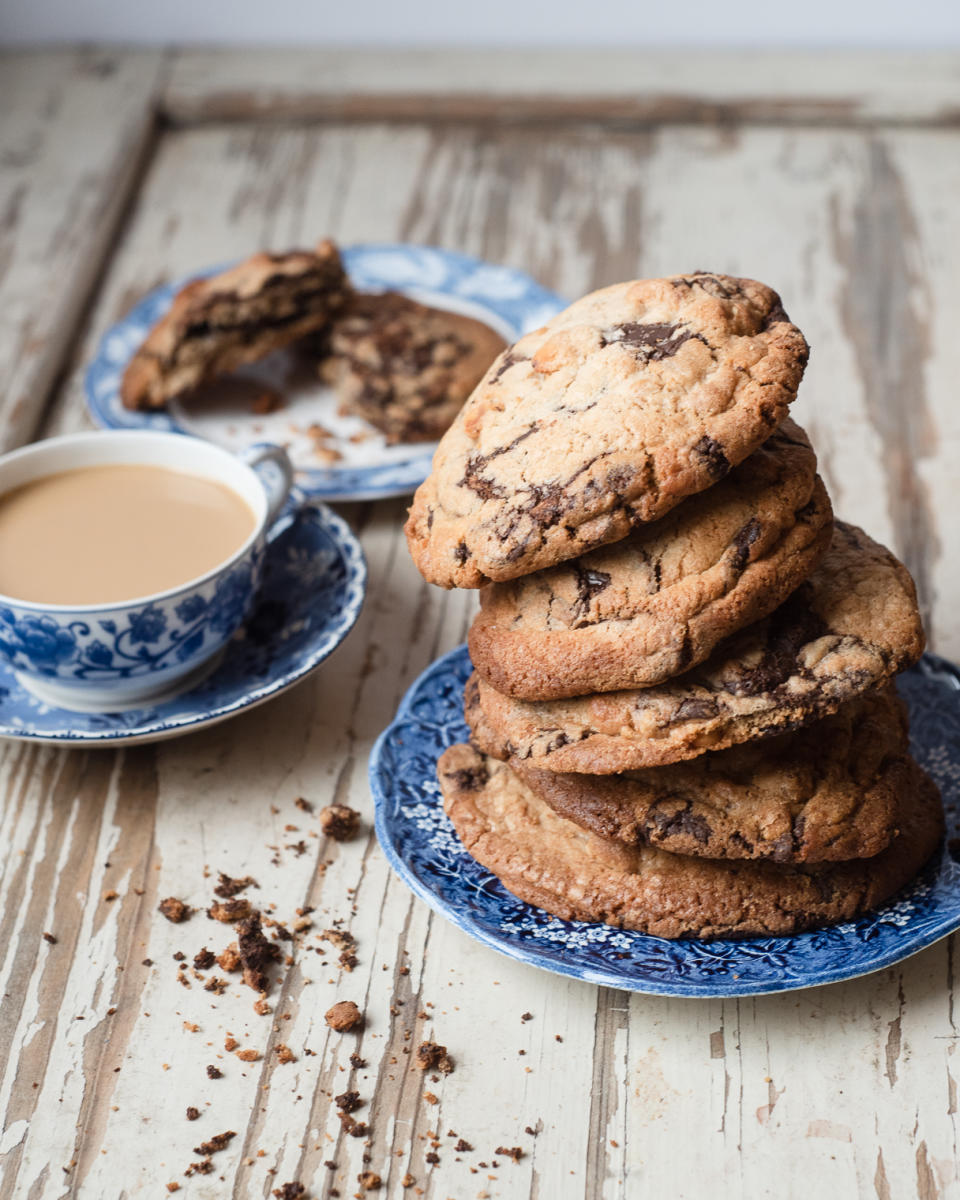
Just as fashion trends change so do pastry ones, with Lafayette offering a corn berry crunch Supreme in September. Others bakeries like Maman are broadening into plant-based and seasonal options.
”You’ll be seeing a lot more vegan and gluten-free items. We just launched a vegan croissant. With a blind taste test, you can hardly taste the difference,” Marshall says. ”We’re broadening our horizons beyond the sweet side of things and broadening our customer base by getting creative and catering to more people.”
Dough’s Klein notes how in real estate, fashion and other businesses, “you work with more problems than having people tell you that you are great. In the donut business what we’ve found is that everybody’s happy when they eat a pastry. The amount of happiness is very high even if people wait in line for an hour or even two hours….For some reason, people today are looking for anybody who has a good pastry.” That said, Dough plans to launch cookies this week.
Best of WWD
Solve the daily Crossword

